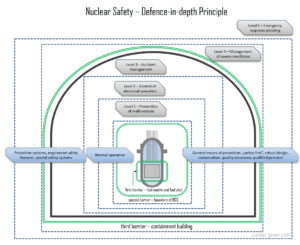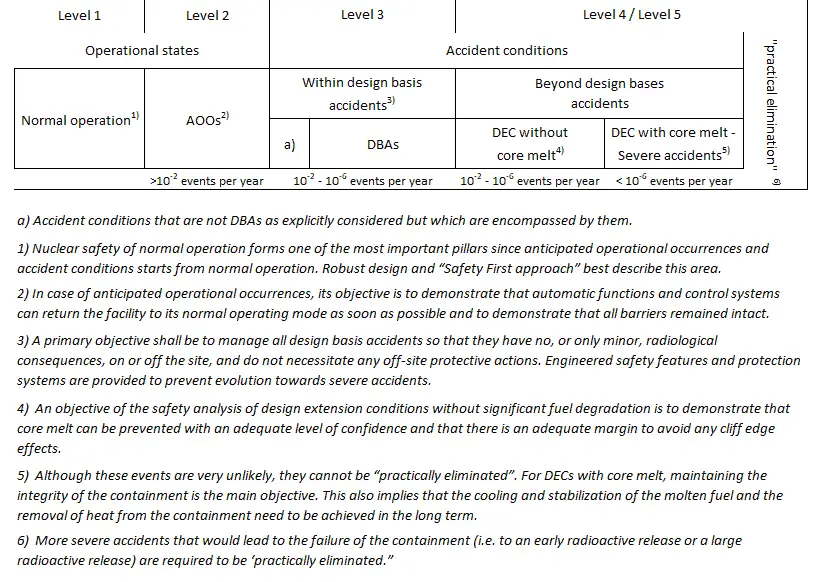The concept of three protective barriers refers to a series of strong and leak-tight physical barriers between radioactive products and the environment. The barriers prevent the release of radioactive products in all circumstances. The goal of defense-in-depth, introduced in the preceding section, is to ensure basic safety functions, i.e., controlling reactivity, cooling irradiated fuel, and containing radioactive substances. These safety functions are necessary to ensure all barriers remain effective.
 First barrier – Fuel matrix and fuel cladding
First barrier – Fuel matrix and fuel cladding
Uranium dioxide is a ceramic refractory uranium compound, in many cases, used as a nuclear fuel. The fission products in an operating reactor are contained within U02 pellets packed into clad fuel elements assembled within the reactor core. Both the fuel matrix and fuel cladding prevent the escape of the fission product gases and confine fission fragments during abnormal and most accidents. This barrier is protected by levels 1 – 3 of defense-in-depth. DNB, fuel, and cladding temperatures constitute key acceptance criteria. Sometimes, this barrier is mentioned as the first and the second barrier.
Second barrier – Boundary of the reactor coolant system
The reactor core is located within a pressure vessel that, in turn, is located inside a containment building. The primary circuit is a closed circuit made of thick steel, and the reactor pressure vessel forms part of this circuit. Fission products that have escaped from the fuel must be confined by this second barrier. The integrity of the primary circuit is also protected by levels 1 – 3 of defense-in-depth. Maximum system pressure and PTS are key controlled criteria.
Third barrier – Containment building
The containment building is primarily designed to prevent or mitigate the uncontrolled release of radioactive material to the environment in operational states and accident conditions. Therefore it is considered the fourth and final barrier in the defense-in-depth strategy. While containment plays a crucial role in Design Basis Accidents or Design Extension conditions, it is “only” designed to condense steam from primary coolant and to contain it inside the building. The integrity of the containment building is also protected by levels 1 – 4 of defense-in-depth.
______
In normal operation, the barriers are not generally perfectly leak-tight: cladding ruptures and leaks in the reactor coolant system and the containment building of limited significance may occur. It is important to mention in this context the particular case of PWR steam generator tubes, which are part of the second and third barriers, since the rupture of a tube may cause the safety valves of the steam generator to open, thus creating a containment bypass.
